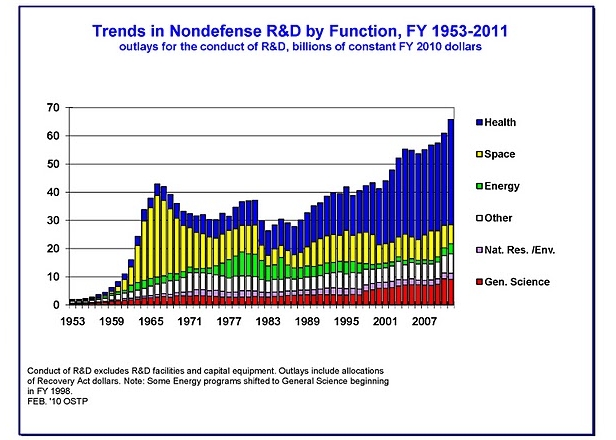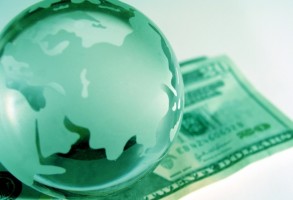Cross-posted from the Wonk Room.
Economics is critical to getting decent climate legislation passed, as Nobel Prize-winning economist Paul Krugman discusses in a extended piece for the New York Times. Economists like me have always suspected that this was true, but then we also suspect that economics is critical to pretty much everything. The problem is that economics hates the environment, or at least environmental policy.
In the real world, environmental policy has been very good for the economy. But economic analyses of climate legislation find that pollution limits slow economic growth and increase costs. The Waxman-Markey climate bill — the American Clean Energy Security Act (ACES) — is a perfect example. As any good wonk will tell you, the economic analyses of ACES actually looked pretty good, especially when compared to some of the econolyptic predictions of past climate policy. The problem is that while the analyses were pretty good for ACES, they were horrible for climate policy. The analysis done by the EPA was the source of some the lowest cost estimates that anyone put out. This analysis was actually bad news.
The reason why this is such bad news for climate policy is because it resonates strongly with people’s fears, it reinforces the conventional wisdom that climate policy will hurt the economy, and because it’s wrong.
The heart of the problem is that the economic models economists use were written, for the most part, by economists. They are based on logical economic theories that make sense to economists because, in part, they assume that everyone understands that economics is critical to pretty much everything, and act rationally as a result. Not “rational” in the sense that people understand the difference between up and down, but rational in the sense that if your boss cut your hourly wage, you would voluntarily choose to work fewer hours, even if you have a family to feed. If you take the assumptions that underlie economic rationality to their logical conclusions, they can result in a pretty strange view of the world and how it works:
SOME FALLACIES OF CONVENTIONAL CLIMATE ECONOMICS:
-
We already live in an economically optimal world. In an economically rational world, there is no inefficiency and everyone is investing the optimal amount of money on research and development of new technologies. If a business could save money by switching to a more efficient heating and cooling system, it would have done it already. Likewise, firms are investing in energy efficiency research up to the point where an additional dollar of investment yields an expected return of one dollar in energy savings. To do less would leave money on the table, and to do more would be a waste. Anything else would be irrational. The implication of this is that, with everyone constantly and correctly optimizing their behavior, there is nothing the government can do to make us any better off. If everyone is investing exactly the right amount in energy efficiency, government incentives for to do more would induce people to do too much, diverting resources from other areas with a higher rate of return. This assumption is most prevalent in what are called “general equilibrium” (GE) models. As you might guess, GE models are preferred by the economic profession, yielding logically consistent if demonstrably wrong results.
-
There can be no win-win solutions. Since everyone is constantly optimizing their energy decisions, anything that could cut carbon emissions while simultaneously saving money or increasing profits has already been done. Emissions cuts that save money have, in economics terms, a negative price. Since no one would ever give you something you wanted and pay you for the privilege of taking it (that would be irrational even to most non-economists, I think), negative cost emissions reductions can’t exist. While it might sound trivial, there is also a technical problem with this. Economic models have a hard time assimilating prices with a negative sign in front of them. So, we declare win-win solutions non-existent by fiat. The EPA analysis comes out looking so good for ACES in large part because the costs of carbon abatement are lower than in other models. But what if someone, say a big consulting firm (McKinsey & Company), went out into the real world and found that carbon abatement costs look more like this:
All those negative cost (win-win) emission reduction opportunities on the left of the McKinsey cost curve are essentially excluded from the EPA analysis — and CBO, EIA, NAM/ACCF … So even the most optimistic analysis of the bunch badly overstates the costs of cutting carbon. No doubt that some of these negative cost reductions require some effort to capture, which is what policy is for.
- No one ever learns. One thing that has bedeviled economists for a while is how to approximate what we call “induced technical change,” the technical advances that occur because of policy changes or in response to price changes. If energy prices go up, you would expect that people would look for new ways to use less energy, resulting in innovations of various kinds. This makes common sense, but figuring out how it all works in the context of an economic model turns out to be pretty tricky. One attempt at this was to use the idea of “learning by doing” — the idea that the more you use of something the more efficient you get at using it. That’s great, except when you plug it into a model along with a climate policy, the climate policy causes you to use less energy, and the less you use of something the less efficient you get at using it. The end result was that carbon pricing slowed innovation in carbon efficient technologies. Back to the drawing board.
Put all these together with the difficulty of parameterizing the global economy, along with a few more that get even wonkier (like how to value ecosystem loss a hundred years down the road), and the odds of getting things right starts to fall pretty rapidly. What’s worse is that almost all of these problems bias the models’ results in the same direction: toward higher economic costs of meeting any given reduction target.
The good news is that there are a few people working to set the record straight. I’ve done some work of my own on this, basically forcing a model to understand the returns to investing in efficiency. The good people at ACEEE are always on the leading edge of research on energy efficiency and have done some very good work recently on laying out the case for why and how economic models should be improved. The E3 network of economists has some excellent work related to this as well.
The bad news is that the really good work is badly outnumbered. So when Congress and other people look at the literature and see it dominated by the bad or merely unhelpful, they naturally tend to discount the other stuff as outliers, as exemplified by how the Congressional Budget Office reinforced incorrect conventional wisdom with its analysis of climate policy. The CBO basically took an average of some of the existing (flawed) work in the field and used it as their basis for figuring out the macroeconomic costs, giving the conventional wisdom an implicit stamp of approval that it doesn’t deserve. As a friend of mine once said: If you’re a physicist and you come up with a new theory that turns the orthodox on its head, they give you a Nobel Prize. If you’re an economist, they deny you tenure.
Economist James Barrett is the executive director of Redefining Progress.



